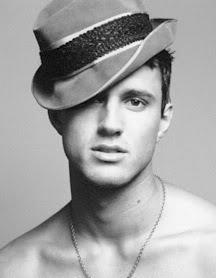
The global mania for brand names has been so mercilessly lampooned, even casual auditors of Fashion 101 recognize this much: manufacturers can slap as many designer logos on their products as the market will bear, but that doesn't make such items well-designed. Mass purveyors of lower-priced accessories like eyeglasses are often the most serious offenders, because they pay prestigious companies high licensing fees for the right to make and sell goods festooned with meaningless labels. However, when smart, creative and dedicated designers are involved, as is the case with the relatively small European firms represented here, the results (with or without famous names attached) can be inspiring.
La famille Lafont has been in the optical business since 1923, when Louis Lafont first opened his Parisian shop near the Madeleine. Louis was a merchant offering spectacles typically made of precious metal, genuine horn or tortoiseshell, all very much in fashion at the time: examples are still on display (and, in some cases, available for sale or custom order), in the original, museum-like store. In 1979, grandson Philippe Lafont decided to take control of all products sold under the family name. He turned to his wife for her design skills, developed a facility where the brand could manufacture its own eyewear and, in the process, transformed Lafont from a retail concern into a vertical operation. Even today, each frame--executed in modern, lightweight metals or acetate--is entirely made in France, down to the tiniest screw. More recently, the family-oriented company (represented by Matthieu Lafont, Philippe's son) has delved into its heritage of four generations, and started reissuing vintage styles: Concierge (top, in photo), tweaks the original schoolboy frame by layering classic tortoiseshell lamina over a backing of bright blue.
FACEàFACE, another French brand, was launched in 1995 by Pascal Jaulent and Nadine Roth. The parent company's name, Architectures, more than hints at the high standards to which these designers hold themselves--balancing form and function, exploring the interplay of shape and material and finding well-designed solutions to real-life problems. The SABBA 3 in lagoon blue (center, in photo) is a good example: so smooth, it's a pleasure to hold; so luscious-looking, it gives the term eye candy new meaning; and, when perched on a face, perfectly balanced as well as utterly devastating.
Frost is a German company whose background, by odd coincidence, shares elements of Lafont's recent history and FACEàFACE's architectural aesthetic. In 1994, Páris Frost couldn't find spectacles he liked, so he asked his wife, jeweler Marion Frost, to design some frames. Local response to this personalized eyewear was so positive, the couple decided to produce limited editions under the name TATTO-O. They sold them to retailers, marketed them at trade shows and, as early as 1997, took advantage of a new phenomenon called the Internet to advertise their brand. The company kept expanding: apparently, Marion's basic credo, which was to treat eyeglasses as architecture for the face, held great appeal. By 2002, the enterprise had grown so large, and encompassed so many different collections, the company was renamed Frost. And at this year's Vision Expo in New York, Marion Frost's f-type (bottom, in photo) generated more than its share of buzz. This titanium frame is a balancing act that really shouldn't work, what with its strange juxtaposition of curves, angles and straight lines; its odd color (aqua, almost teal); and the otherworldly feel of its barely-there metal. But it not only works, it succeeds, and accomplishes something rare by appearing slightly retro and disturbingly new at the same time. How apt: eyewear that offers a vision of things to come. That may well be the fashion industry's equivalent of poetic justice.
www.lafont.com
www.faceaface-paris.com
www.pm-frost.de
Photograph by Ron Reeves
www.ronreeves.com
La famille Lafont has been in the optical business since 1923, when Louis Lafont first opened his Parisian shop near the Madeleine. Louis was a merchant offering spectacles typically made of precious metal, genuine horn or tortoiseshell, all very much in fashion at the time: examples are still on display (and, in some cases, available for sale or custom order), in the original, museum-like store. In 1979, grandson Philippe Lafont decided to take control of all products sold under the family name. He turned to his wife for her design skills, developed a facility where the brand could manufacture its own eyewear and, in the process, transformed Lafont from a retail concern into a vertical operation. Even today, each frame--executed in modern, lightweight metals or acetate--is entirely made in France, down to the tiniest screw. More recently, the family-oriented company (represented by Matthieu Lafont, Philippe's son) has delved into its heritage of four generations, and started reissuing vintage styles: Concierge (top, in photo), tweaks the original schoolboy frame by layering classic tortoiseshell lamina over a backing of bright blue.
FACEàFACE, another French brand, was launched in 1995 by Pascal Jaulent and Nadine Roth. The parent company's name, Architectures, more than hints at the high standards to which these designers hold themselves--balancing form and function, exploring the interplay of shape and material and finding well-designed solutions to real-life problems. The SABBA 3 in lagoon blue (center, in photo) is a good example: so smooth, it's a pleasure to hold; so luscious-looking, it gives the term eye candy new meaning; and, when perched on a face, perfectly balanced as well as utterly devastating.
Frost is a German company whose background, by odd coincidence, shares elements of Lafont's recent history and FACEàFACE's architectural aesthetic. In 1994, Páris Frost couldn't find spectacles he liked, so he asked his wife, jeweler Marion Frost, to design some frames. Local response to this personalized eyewear was so positive, the couple decided to produce limited editions under the name TATTO-O. They sold them to retailers, marketed them at trade shows and, as early as 1997, took advantage of a new phenomenon called the Internet to advertise their brand. The company kept expanding: apparently, Marion's basic credo, which was to treat eyeglasses as architecture for the face, held great appeal. By 2002, the enterprise had grown so large, and encompassed so many different collections, the company was renamed Frost. And at this year's Vision Expo in New York, Marion Frost's f-type (bottom, in photo) generated more than its share of buzz. This titanium frame is a balancing act that really shouldn't work, what with its strange juxtaposition of curves, angles and straight lines; its odd color (aqua, almost teal); and the otherworldly feel of its barely-there metal. But it not only works, it succeeds, and accomplishes something rare by appearing slightly retro and disturbingly new at the same time. How apt: eyewear that offers a vision of things to come. That may well be the fashion industry's equivalent of poetic justice.
www.lafont.com
www.faceaface-paris.com
www.pm-frost.de
Photograph by Ron Reeves
www.ronreeves.com

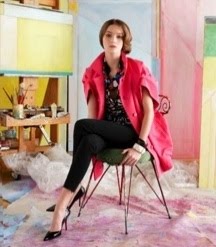
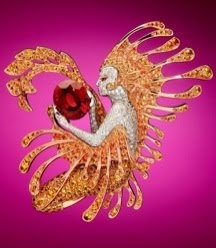






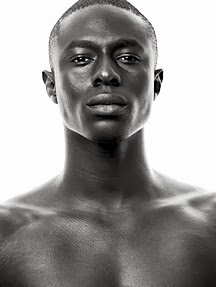










.jpg)

.jpg)
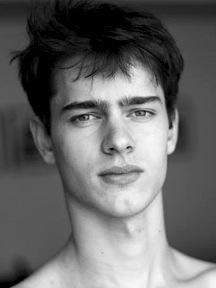
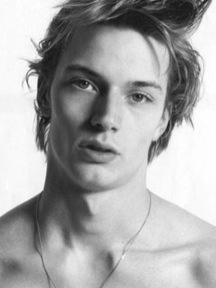.jpg)
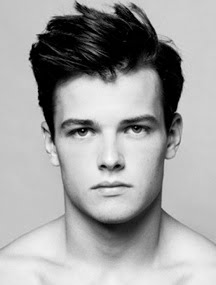
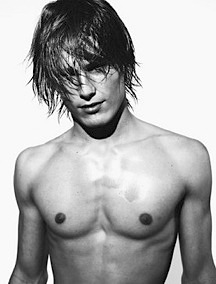
.jpg)




.jpg)
